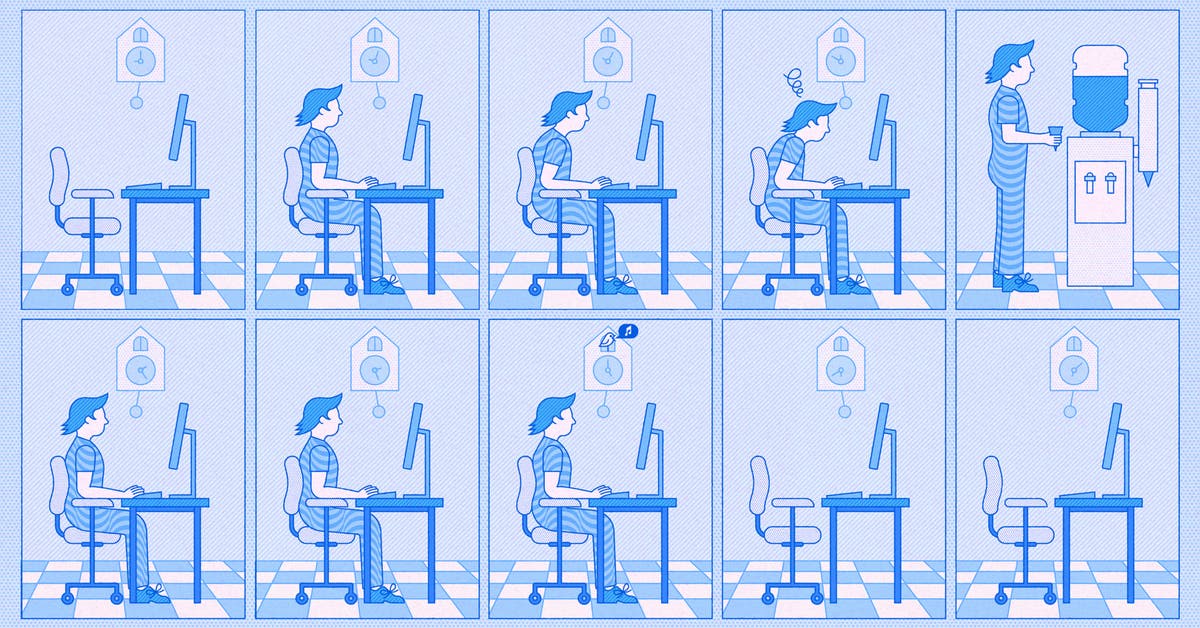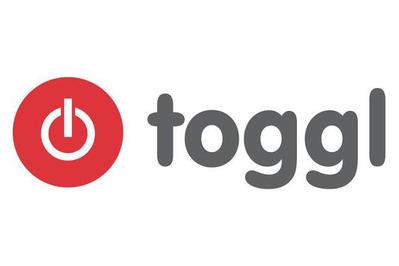Humans aren’t built to work at a desk for eight hours straight. Even if that were so, people are entitled to breaks and time away from the deluge of corporate speak, activities, and, well, even colleagues. But stepping away from work often gets pushed aside until that oh-so-important task is done.
Balking at breaks is the wrong move. Research shows that the more people are forced to be productive, the less productive they become. This law of diminishing returns ensures that people are more likely to make mistakes when they don’t step away from their desks. Workers don’t accomplish nearly as much of their to-do lists, either.
“It’s critical that we listen to our bodies,” says Edward J. Beltran of Fierce, a Seattle-based leadership development organization. “Go grab a snack or a drink, and use those few minutes to breathe and clear your mind.”
But grabbing an energy bar isn’t enough. Breaks can’t just be an extension of work. They deserve your full attention.
First, figure out your brain’s ideal routine so that you can create a work environment that will boost your productivity. Then you’ll feel less guilty about taking your well-deserved breaks. To get the most out of your respite, set timers and boundaries to ensure that work won’t seep into your downtime. And spend the time far from your desk to give your brain a much-needed reset.
To find some worthwhile approaches to optimizing breaks, I reviewed studies, grilled my Wirecutter colleagues on their routines, and spoke with productivity experts. Here’s how to build better breaks for yourself.
Find your productive sweet spot
Guilt can breathe down your neck when you step away from your desk during a busy workday. Determining when you’re the most productive can help you decide when it’s best to take breaks.
To start, grab a pen and paper to track your days. If you want to be more precise, time-tracking apps can help tally up the time. Toggl Track, our favorite time-tracking tool for freelancers, offers helpful prompts and even encourages you to take breaks. RescueTime, a time-tracking app that is better for Mac users, learns how you work and suggests how best to maximize your time. (Toggl’s similar feature is available only for Windows and in browser extensions.)
Then, track how you spend your days over the next week. Note how productive you feel during each task. Divide the tasks into analytical, creative, and downtime, or label them as deep work, shallow work, and breaks. Look for patterns.
If you’re like me, you’re more creative in the mornings, and you do deep work in the afternoons and evenings. For me, that means I spend mornings checking emails, assessing my to-do lists, and completing simpler tasks ahead of a busy week. Then I take a mental break. Finally, I dive into research and writing mode later in the day, when I’m feeling the most productive.
Mapping out your workweek helps you determine the times when you’re most creative, focused, or likely to make mistakes. That’s important, because the last thing you want to do is to take on an important task when your brain is ready for a recharge.
Schedule breaks (and disguise them as meetings)
Taking a break at the right time can limit burnout. A small-scale study at Baylor University found that people felt refreshed after taking a handful of longer breaks or several mini breaks—especially when doing something they enjoy. Thus, taking frequent breaks before your brain feels like mush makes that mental recovery time faster.
You have plenty of ways to automate your break schedules:
- Google Calendar’s focus time feature automatically declines new meeting requests, creating intrusion-proof blocks of time that work well for breaks and intensive work alike.
- If you don’t use Google Workspace, the Microsoft Viva Insights app lets you schedule breaks or up to four hours of focus time a day.
- Both Google Workspace and Microsoft Outlook can also create built-in breaks by shortening meeting durations by five or 10 minutes at a time.
Make work stoppages more enjoyable
You could set a timer for important tasks, but where’s the fun in that? Instead, consider creating entertaining audio reminders that tell you when to take a break or help mark the time away.
Wirecutter senior staff writer Max Eddy uses Google Assistant to announce when it’s time to step back three times a day. “It’s a good way to build the habit,” he says. “And at the end of the day, the Google Home speaker plays ‘Solidarity Forever’ by Pete Seeger to remind me it’s time to log off.” The Amazon Echo Show 8 (2nd Gen) and the Google Nest Hub Max are great delivery devices for such triggers thanks to their clear sound and convenient smart-home controls.
For a low-tech option, senior staff writer Elissa Sanci likes the analog Time Timer desk timer, which you can set for up to 60 minutes. As time elapses, a colored segment on the clock face denoting the remaining time gradually disappears. “Having a visual representation of time ticking helps me stay on track and focused,” she says. The clock works well for tracking spurts away from work, too.
Enforce boundaries
Sometimes, scheduling breaks isn’t enough to get you to disconnect from work. The notifications that ping your devices can suck you back in at any moment. But you have a few ways to keep them from imposing on your personal time:
But actually taking your scheduled breaks solves only part of the problem. You also have to train yourself to block out the rest of the world while you’re away. That includes your evenings and weekends, too.
“People need to not think too much about work after hours,” notes Jessica Kriegel, a researcher with workplace culture development firm Culture Partners. “Clearing their head will help them stay motivated and healthy, rather than become burnt out.”
To ensure that your you-time remains yours, here are a few more things you can do:
Don’t forget to respect your coworkers’ time, too. If you’re pulling an all-nighter, resist the urge to send an email or direct message outside of business hours. Instead, schedule that Gmail or Outlook email, or that Slack or Teams ping, to arrive the next day.
Leave your workspace
It’s no secret that a walk outdoors can improve your mood and help you sleep better. But leaving the office space doesn’t come easy to many people. The solution: “Get a dog,” says Wirecutter senior staff writer Melanie Pinola.
As a dog owner and Wirecutter’s former pets writer, I’d have to agree—kind of. Though I wouldn’t actually recommend that anyone get a dog just to guarantee that they take breaks from work, I can confirm that a dog is really good motivation for me to leave my desk.
I’m no stranger to delaying my pup’s afternoon walk when I’m swamped, but I broke that habit by setting a daily Slack reminder to ensure that both the dog and I get extended time outdoors. The /remind command pings me every day at lunch to “Take Sutton for a walk.”
Sleep. (Seriously.)
Napping during the workday may send some people into a tizzy. But breaks should work for you, not against you.
Once you’ve scheduled important tasks around your most productive times of the day, it’s easy to fit in a power nap. Many people can wake up refreshed after a 20- to 30-minute nap. A nap can even help you feel less tired and improve your mood, short-term memory, and concentration.
I’m always in a sleep deficit, and I need at least 60 minutes of sleep to reap the benefits of a power nap. Thankfully, research shows that a longer nap can improve both memory and creativity—both important skills in many professions.
So have at it. Set an alarm, head to your car and recline the seat, or snuggle up on the sofa at home, and enjoy a few minutes of blissful rest. If a nap is good enough for Kelly Kapoor, it’s good enough for you, too. (For legal reasons, we have to note that napping on the job is a joke.) It’s always good to have blackout curtains, an eye mask, noise-cancelling headphones, or a white noise machine to help the rest of the world drift away.
Tend to relationships
It turns out that taking a break unrelated to work reenergizes you more than a break that bleeds into work. So lunches with a colleague that always circle back around to pending assignments don’t actually count as downtime—not for your brain, anyway. To get the most of your gab time, spend it on personal relationships instead.
Add “call bestie” to your work calendar so that it doesn’t slide off your mental to-do list. And don’t feel self-conscious about making time for them. People who express affection for one another are more likely to develop lasting friendships, according to psychologist and author Marisa G. Franco, PhD.
To help me remember my friends’ most important life updates, I peek at their contact listings in my phone. This is where I store birthdays, spouse and pet names, and more. This trick ensures that I always ask my friends about their new beau by name or know that a parent’s surgery is coming up soon.
That human contact, even over the phone, can greatly improve your mood and deepen relationships. “A sense of connection does not seem to come from being able to see another person but rather from hearing another person’s voice,” reports Harvard Business Review.
Maybe learning to prioritize ourselves and those we care about will make spending one-third of our lives at work worth it.
This article was edited by Ben Keough and Erica Ogg.

